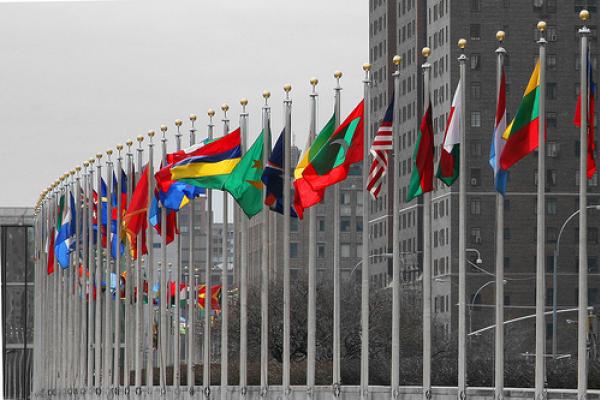It happens to me maybe once or twice a month. Just the other morning I was in the elevator with my bike, riding up to our third-floor office. I felt a vibration in my pocket and reached for my phone. It wasn’t there. It was in my messenger bag, I quickly remembered as I tried to act casual.
I’m not alone in this experience. A handful of studies in recent years have examined the prevalence of phantom cellphone vibrations, and they’ve come up with impressive numbers, from 68 percent of the medical staff at a Massachusetts hospital to 89 percent of undergraduates at a midwestern university, to more than 90 percent of Taiwanese doctors-in-training in the middle of their internships.
“Phantom vibrations are this unusual curiosity that speaks to our connection with our phones,” said David Laramie, a clinical psychologist in Beverly Hills who did his doctoral thesis on people’s relationships with their mobile phones. Laramie’s thesis, published in 2007, was the first study to examine the prevalence of phantom vibrations and phantom ringing. Two-thirds of the people he surveyed had experienced one or the other. “It’s part of the modern landscape and our relationship with technology,” he said.
In 2012, the Macquarie Dictionary, the authoritative source of Australian English, chose “phantom vibration syndrome” as its “ Word of the Year .” (In what presumably was a coincidence, the readers choice award that year went to “First World problem.”)
OK, so it’s not among the most pressing issues of our day (indeed, the vast majority of people surveyed describe the sensation as not at all bothersome at all, or only a little bit bothersome). But it’s an intriguing phenomenon. Healthy people don’t often hallucinate. But lots of healthy people experience this particular hallucination. What could be causing it?
Hallucination may not be the most appropriate term, according to Laramie. “You’re misinterpreting something, but there is this external cue. You’re not totally making it up.” A compelling alternative, he suggests, is pareidolia. “That’s the phenomenon where you see a face in the clouds or hear ‘Paul is dead’ when you listen to the Beatles backwards.” (Or see the Virgin Mary on a grilled cheese sandwich ). Essentially, it’s your brain getting a little bit carried away with its normally very useful talent for finding patterns in the world around you.
Laramie was inspired to study phantom phone phenomena by his own experience with phantom ringing. “Back then I had a certain ring that involved a pitch that was akin to sounds I bumped into in my life all the time,” he said. When he changed his ringtone, the phantom ringing stopped.
In his thesis research, he found the two biggest predictors of phantom vibrations and ringing were age (young people experienced them more) and the extent to which people relied on their phone to regulate their emotional state—checking their phone when they wanted to calm down, for example, or get an emotional boost. “My hunch is at this point it’s a generational thing,” Laramie said. Twenty- and thirty-somethings who grew up with cellphones and have them ingrained in their daily lives probably experience the effect more than older people or technophobes, he says.
For a more mechanistic explanation, I called Sliman Bensmaia, a neuroscientist at the University of Chicago who studies the sense of touch. He was familiar with phantom vibrations, but says he didn’t realize how common they are. “I had no idea this is a thing,” he said. “But it’s happened to me on a few occasions, to the extent that I reached for my phone and was surprised it wasn’t there.”
There are two types of receptors in the skin that detect vibrations: Meissner’s corpuscles, which specialize in slow vibrations, and Pacinian corpuscles, which specialize in higher-frequency vibrations. Most cellphones vibrate at between 130 and 180 hertz, which falls in between the sweet spots of the two types of receptors. Those vibrations probably activate both types of receptors, but probably activate the Pacinian corpuscles more, Bensmaia says.
Like Laramie, Bensmaia thinks phantom vibrations are a result of the brain’s penchant for filling in the gaps to find patterns. A visual equivalent, he suggests, is seeing the outlines of furniture when you walk through your house in near-total darkness, or seeing the image of a Dalmatian in a field of black and white dots (it’s hard to see at first, but once you detect the pattern it’s almost impossible not to see it).
 “What happens, I think, is that because your clothes are rubbing against your skin, you cause activity in the same receptors, and that activity is just similar enough to the activity caused by a vibrating phone that it triggers the learned association and the perception of a vibrating phone,” he said. It’s not clear exactly where in the brain that occurs, Bensmaia says, but it probably involves the primary somatosensory cortex and other higher-level areas that process the sense of touch.
“What happens, I think, is that because your clothes are rubbing against your skin, you cause activity in the same receptors, and that activity is just similar enough to the activity caused by a vibrating phone that it triggers the learned association and the perception of a vibrating phone,” he said. It’s not clear exactly where in the brain that occurs, Bensmaia says, but it probably involves the primary somatosensory cortex and other higher-level areas that process the sense of touch.
If that explanation is right, you should only experience phantom vibrations where you commonly keep your phone, and probably not when you’re naked. Laramie says he’s had one or two people tell him they often experience phantom vibrations when they wear corduroy pants, which would seem to fit well with the pattern completion hypothesis, especially if the ridges slide across the skin at a frequency that approximates that of a vibrating cellphone. (It’s too hot in California to wear corduroys right now, but I pulled out a pair and did a quick calculation: at 14 ridges per inch, if an inch of fabric slid across the skin in a tenth of a second, say as you took a step, that would get you to 140 hertz, which is in the ballpark).
Now, if you happen to be one of the 5 to 10 percent of people who find phantom vibrations bothersome, it should be easy to reduce or eliminate them. If you stop using vibration mode or keep your phone in another place, your brain should soon learn to stop monitoring your thigh for vibrations. And whatever you do, don’t wear cords.
I’m not alone in this experience. A handful of studies in recent years have examined the prevalence of phantom cellphone vibrations, and they’ve come up with impressive numbers, from 68 percent of the medical staff at a Massachusetts hospital to 89 percent of undergraduates at a midwestern university, to more than 90 percent of Taiwanese doctors-in-training in the middle of their internships.
“Phantom vibrations are this unusual curiosity that speaks to our connection with our phones,” said David Laramie, a clinical psychologist in Beverly Hills who did his doctoral thesis on people’s relationships with their mobile phones. Laramie’s thesis, published in 2007, was the first study to examine the prevalence of phantom vibrations and phantom ringing. Two-thirds of the people he surveyed had experienced one or the other. “It’s part of the modern landscape and our relationship with technology,” he said.
In 2012, the Macquarie Dictionary, the authoritative source of Australian English, chose “phantom vibration syndrome” as its “ Word of the Year .” (In what presumably was a coincidence, the readers choice award that year went to “First World problem.”)
OK, so it’s not among the most pressing issues of our day (indeed, the vast majority of people surveyed describe the sensation as not at all bothersome at all, or only a little bit bothersome). But it’s an intriguing phenomenon. Healthy people don’t often hallucinate. But lots of healthy people experience this particular hallucination. What could be causing it?
Hallucination may not be the most appropriate term, according to Laramie. “You’re misinterpreting something, but there is this external cue. You’re not totally making it up.” A compelling alternative, he suggests, is pareidolia. “That’s the phenomenon where you see a face in the clouds or hear ‘Paul is dead’ when you listen to the Beatles backwards.” (Or see the Virgin Mary on a grilled cheese sandwich ). Essentially, it’s your brain getting a little bit carried away with its normally very useful talent for finding patterns in the world around you.
Laramie was inspired to study phantom phone phenomena by his own experience with phantom ringing. “Back then I had a certain ring that involved a pitch that was akin to sounds I bumped into in my life all the time,” he said. When he changed his ringtone, the phantom ringing stopped.
In his thesis research, he found the two biggest predictors of phantom vibrations and ringing were age (young people experienced them more) and the extent to which people relied on their phone to regulate their emotional state—checking their phone when they wanted to calm down, for example, or get an emotional boost. “My hunch is at this point it’s a generational thing,” Laramie said. Twenty- and thirty-somethings who grew up with cellphones and have them ingrained in their daily lives probably experience the effect more than older people or technophobes, he says.
For a more mechanistic explanation, I called Sliman Bensmaia, a neuroscientist at the University of Chicago who studies the sense of touch. He was familiar with phantom vibrations, but says he didn’t realize how common they are. “I had no idea this is a thing,” he said. “But it’s happened to me on a few occasions, to the extent that I reached for my phone and was surprised it wasn’t there.”
There are two types of receptors in the skin that detect vibrations: Meissner’s corpuscles, which specialize in slow vibrations, and Pacinian corpuscles, which specialize in higher-frequency vibrations. Most cellphones vibrate at between 130 and 180 hertz, which falls in between the sweet spots of the two types of receptors. Those vibrations probably activate both types of receptors, but probably activate the Pacinian corpuscles more, Bensmaia says.
Like Laramie, Bensmaia thinks phantom vibrations are a result of the brain’s penchant for filling in the gaps to find patterns. A visual equivalent, he suggests, is seeing the outlines of furniture when you walk through your house in near-total darkness, or seeing the image of a Dalmatian in a field of black and white dots (it’s hard to see at first, but once you detect the pattern it’s almost impossible not to see it).
 “What happens, I think, is that because your clothes are rubbing against your skin, you cause activity in the same receptors, and that activity is just similar enough to the activity caused by a vibrating phone that it triggers the learned association and the perception of a vibrating phone,” he said. It’s not clear exactly where in the brain that occurs, Bensmaia says, but it probably involves the primary somatosensory cortex and other higher-level areas that process the sense of touch.
“What happens, I think, is that because your clothes are rubbing against your skin, you cause activity in the same receptors, and that activity is just similar enough to the activity caused by a vibrating phone that it triggers the learned association and the perception of a vibrating phone,” he said. It’s not clear exactly where in the brain that occurs, Bensmaia says, but it probably involves the primary somatosensory cortex and other higher-level areas that process the sense of touch.If that explanation is right, you should only experience phantom vibrations where you commonly keep your phone, and probably not when you’re naked. Laramie says he’s had one or two people tell him they often experience phantom vibrations when they wear corduroy pants, which would seem to fit well with the pattern completion hypothesis, especially if the ridges slide across the skin at a frequency that approximates that of a vibrating cellphone. (It’s too hot in California to wear corduroys right now, but I pulled out a pair and did a quick calculation: at 14 ridges per inch, if an inch of fabric slid across the skin in a tenth of a second, say as you took a step, that would get you to 140 hertz, which is in the ballpark).
Now, if you happen to be one of the 5 to 10 percent of people who find phantom vibrations bothersome, it should be easy to reduce or eliminate them. If you stop using vibration mode or keep your phone in another place, your brain should soon learn to stop monitoring your thigh for vibrations. And whatever you do, don’t wear cords.







